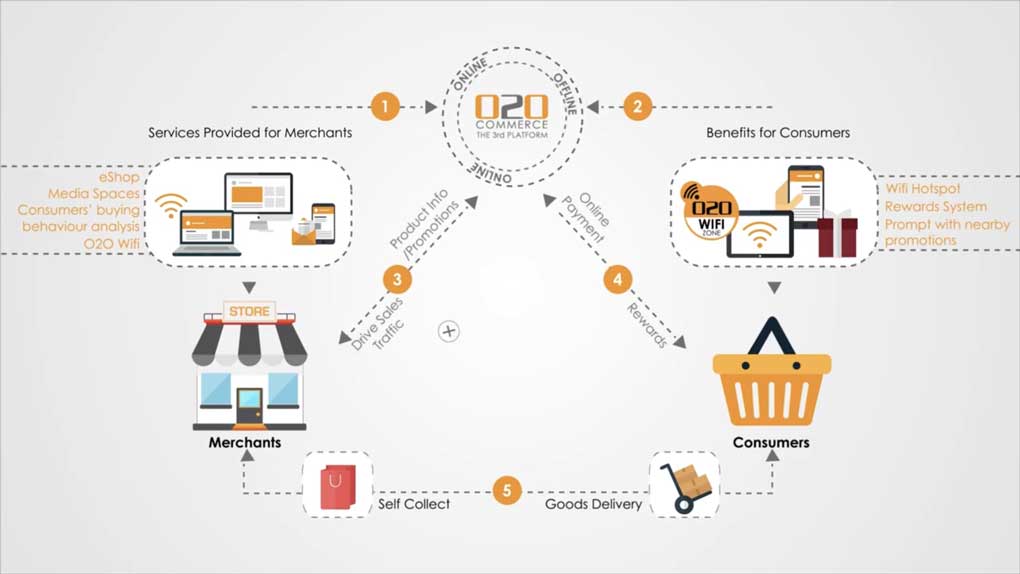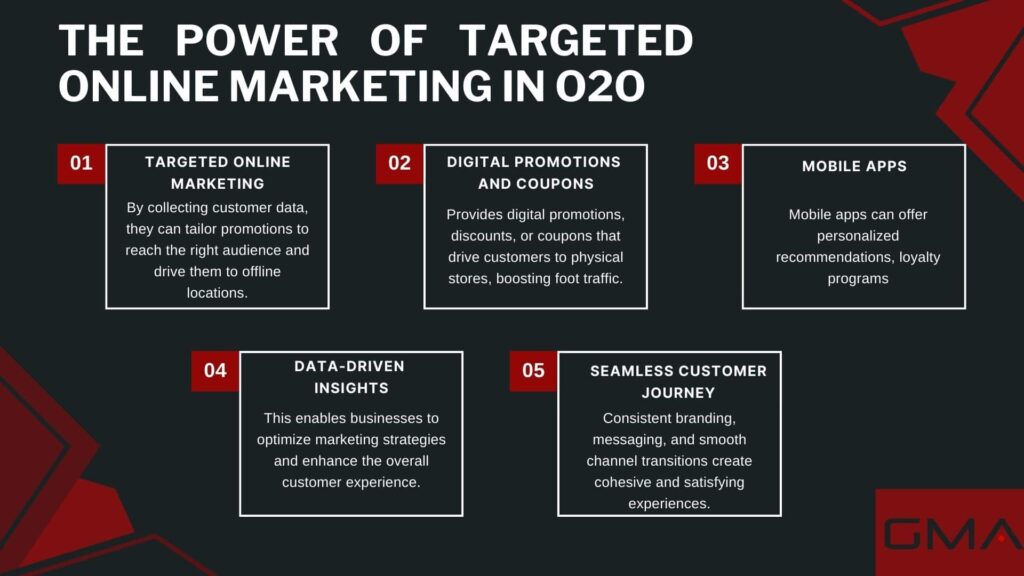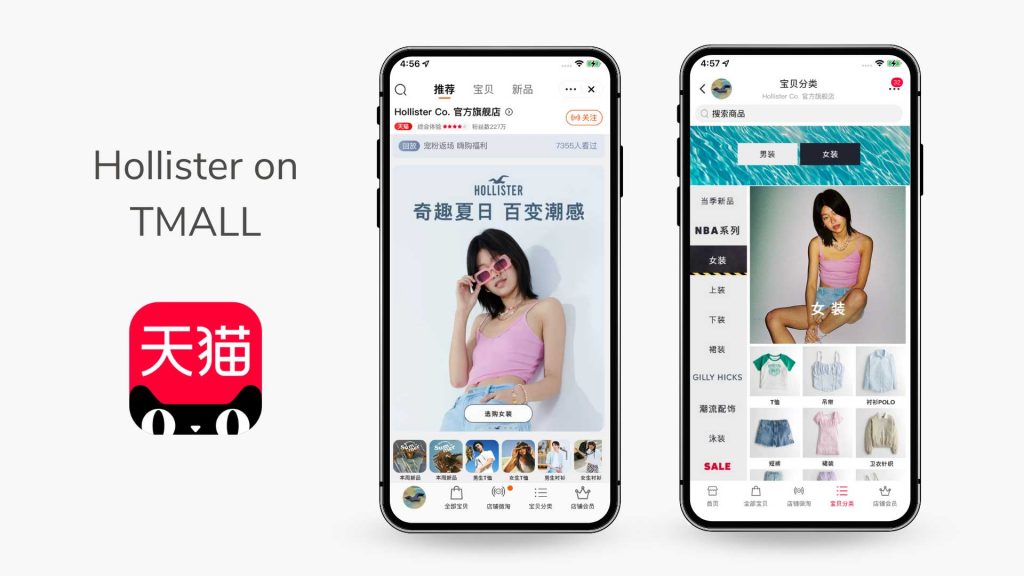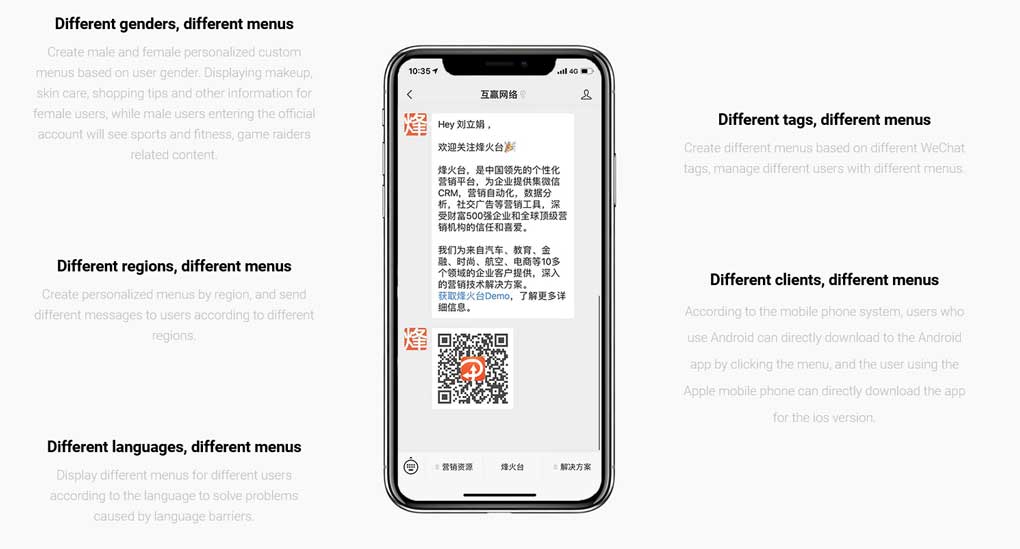China’s retail landscape is undergoing a transformative phase, fueled predominantly by the fast-paced digital innovation. Ecommerce has fundamentally altered how consumers shop, leading to the rise of new retail trends like Online-to-Offline (O2O) strategies.
This innovative model combines the convenience of online shopping with the tangible experience of offline stores, creating an omnichannel customer experience that caters to a more digitally savvy clientele.
Need a cost effective TP (Tmall Partner) to sell in China?
We are an Official Tmall Partner e-commerce Agency. Our Services: E-Commerce, Search Engine Optimization, Advertising, Weibo, WeChat, WeChat Store & PR.
The significance of O2O strategies in this evolving market cannot be understated. As physical and digital spaces merge, businesses are recognizing the advantages of integrating both channels into their operations.
O2O marketing principles enable us to harness the power of data-driven personalization and mobile payment technology for enhanced service delivery. This blog post will provide valuable insights into successful O2O models, innovative technologies, overcoming challenges, and future trends.
Key Takeaways
- Online-to-Offline (O2O) business models are crucial in navigating China’s evolving retail landscape, combining online convenience with offline experiences for a more seamless customer journey.
- Mobile payments (Alipay, Wechat pay) play a significant role in O2O transactions in China, providing efficient and convenient payment options that bridge the gap between online browsing and offline purchasing.
- Successful case studies such as Alibaba’s New Retail Strategy, JD.com’s Smart Supply Chain, Xiaomi’s Offline Expansion, and Starbucks’ Mobile Ordering and Payment demonstrate how brands can effectively implement O2O strategies to enhance customer engagement, loyalty, and sales growth.
- Chinese fashion brands are implementing O2O strategies through collaborations with local e-commerce platforms like Alibaba and JD.com, leveraging influencer marketing to drive conversions both online and offline.

The Online-to-Offline (O2O) Strategy in Chinese Retail
The Rise of the O2O Model in China
China’s O2O revolution didn’t happen overnight; it was a gradual evolution fueled by a confluence of technology trends and consumer behavior changes. The rise of smartphones, coupled with high-speed internet and an increasingly digital-savvy population, served as the foundation for this revolutionary retail concept.
Initiated in China’s urban areas, it soon spread across the country as brands identified its potential to bridge online marketing efforts with physical transactions.
The early 2010s marked a significant turning point in the adoption of O2O strategies. As Chinese consumers warmed up to mobile payments and e-commerce platforms like Alibaba gained traction, companies recognized that combining online engagement with offline sales could drive enhanced customer experiences.
It quickly became apparent that seamless integration between these two worlds was essential for thriving in China’s retail landscape – thus setting alight the fuse for what would eventually become one of the most profound shifts seen yet within China’s robust retail industry: The Rise of the O2O Model!

Digital Innovation and O2O
The digital landscape in China is rapidly evolving, and at the center of these transformations is the Online-to-Offline (O2O) strategy – a powerful tool for businesses to bridge the gap between offline and online shopping experiences.
Fueled by QR codes, mobile payments, and innovative startups, O2O quickly grew into a buzzword in 2015 with an impact that still reverberates today. It drives remarkable changes in how consumers shop and retailers market their products.
Fashion brands are certainly feeling this shift. They’re leveraging O2O to thrive amidst these changes as they blend physical storefronts with e-commerce platforms such as Alibaba – creating seamless omnichannel retailing experiences for clients.
The result? A marked improvement in service quality while amplifying product visibility both online and offline. However, successful implementation requires an understanding of not just emerging technologies but also deep consumer behavior insights specific to the Chinese market.
Role of Mobile Payments in O2O Transactions
In this sector, convenience reigns supreme; consumers want smooth transitions from online browsing to offline purchasing.
Here’s where mobile payments come into play: Packaged as part of an omnichannel retailing strategy, they provide shoppers with an efficient way to complete their purchases both online and at physical stores.
QR code technology has become a key driver for this change, boosting foot traffic by easing and expediting the process of going from virtual shopping carts to checkout lines.
Mobile payment platforms not only facilitate O2O commerce but keep the momentum growing in Chinese retail’s adoption of O2O strategies. This impact is transformative—merging online marketing with brick-and-mortar locations to create cohesive experiences that resonate well with the modern Chinese consumer journey.
Therefore, understanding its function within your business operations is crucial for maintaining a competitive edge within China’s evolving retail scene.

Case Studies of Successful O2O Retail Strategies in China
When it comes to O2O strategies, there are several successful case studies that can provide valuable insights for businesses looking to implement similar approaches. Let’s take a look at some of these case studies:
Alibaba’s New Retail Strategy
- Alibaba, one of China’s leading e-commerce giants, has successfully implemented an O2O strategy through its “New Retail” concept.
- By combining online and offline channels, Alibaba creates a seamless shopping experience for consumers.
- Through partnerships with various brick-and-mortar retailers, Alibaba leverages its vast user database to drive traffic from online platforms to physical stores.
- This O2O strategy has greatly improved customer engagement and increased sales for participating brands.

JD.com’s Smart Supply Chain
- JD.com, another major player in the Chinese e-commerce market, has pioneered innovative O2O strategies through its smart supply chain system.
- By utilizing advanced technologies such as AI and big data analytics, JD.com optimizes its inventory management and delivery processes.
- This allows customers to make online purchases and receive their products within hours or even minutes through self-pickup or same-day delivery options.
- The seamless integration of online ordering and offline fulfillment has significantly enhanced the overall customer experience.

Xiaomi’s Offline Expansion
- Xiaomi, a well-known Chinese smartphone manufacturer, successfully expanded its presence from being an online-only brand in China to establishing brick-and-mortar stores.
- By combining its strong online following with physical retail locations, Xiaomi engages with customers at multiple touchpoints throughout its buyer journey.
- The offline stores provide opportunities for customers to experience Xiaomi products firsthand before making a purchase decision.
- This O2O strategy has not only increased sales but also helped build trust and loyalty among customers.

Starbucks’ Mobile Ordering and Payment
- Starbucks, the global coffee chain, has implemented a highly successful O2O strategy by integrating mobile ordering and payment functionalities into its app.
- By allowing customers to order and pay for their drinks in advance, Starbucks reduces wait times and enhances convenience.
- The app also provides personalized recommendations and rewards, encouraging customers to visit physical stores.
- This O2O approach has significantly improved customer engagement and loyalty while driving sales growth for Starbucks.

Implementing O2O Strategies in Chinese Retail
Collaboration with Local E-commerce Platforms (Alibaba, JD.com)
Collaborating with local e-commerce platforms like Alibaba and JD.com is a crucial aspect of implementing successful O2O strategies in Chinese retail. These platforms provide an established customer base and robust infrastructure, making it easier for brands to connect their online and offline channels seamlessly.
By partnering with these giants, businesses can tap into the massive online marketplaces they offer, increasing their brand visibility and reaching a wider audience.
Alibaba, being at the forefront of the O2O retail market in China, offers various tools and services that enable businesses to integrate their online presence with physical stores effectively.
JD.com also provides extensive support for brands looking to implement O2O strategies by leveraging its logistics capabilities and customer insights. Collaborating with both platforms allows brands to harness the immense potential of China’s thriving e-commerce ecosystem.
By capitalizing on the reach and influence of these local e-commerce platforms, businesses can enhance their presence in the Chinese retail landscape more efficiently. It’s essential to adapt marketing efforts while considering consumer shopping habits influenced by COVID-19.

Leveraging Influencers and KOLs Marketing for O2O
In China’s retail landscape, leveraging influencers and KOLs can be a game-changer for your brand. These individuals have massive followings and hold considerable influence over consumers’ purchasing decisions.
By collaborating with popular influencers and KOLs, you can tap into their loyal fan base to create buzz around your brand. They can promote your products through engaging content on social media platforms like WeChat or Weibo, encouraging their followers to visit your physical stores or participate in O2O campaigns.
Through their trusted recommendations and personal experiences with your brand, they bridge the gap between online engagement and offline sales.

Seamless Integration: QR Codes, Geolocation, and Mobile Technologies
The utilization of QR codes, geolocation technology, and mobile technologies plays a vital role in creating a successful O2O strategy within the Chinese retail market. For instance, through strategically placed QR codes throughout their store layout or even on product tags themselves, brands can connect consumers directly with additional information such as product specifications or user reviews just by scanning these codes using their smartphones.
Moreover, employing geolocation technology allows retailers to leverage customer’s location data to personalize messaging or offer promotional incentives based on proximity when they enter designated areas near physical stores.
Lastly but not leastly , mobile technologies such as digital wallet solutions enable consumers convenient payment options during an offline purchase while simultaneously accumulating loyalty points for future discounts all tied back into your CRM system ensuring enhanced customer engagement over time.

Adoption of Augmented Reality (AR) and Virtual Reality (VR) in Shopping Experience
In Chinese retail, AR and VR are being increasingly used to bridge the gap between online and offline shopping channels.
By integrating AR and VR into their shopping experiences, retailers are able to provide customers with a more immersive and engaging way to shop. Customers can virtually try on clothes or accessories using AR technology, visualizing how they would look before making a purchase.
Likewise, VR allows customers to explore virtual stores or showrooms as if they were physically present, enhancing their ability to make informed buying decisions.
This adoption of AR and VR aligns with the growing importance of O2O strategies in Chinese retail. By offering intelligent experiences through these technologies, retailers can attract and engage customers in new ways.

Challenges and Risks of Implementing O2O in China
Intellectual Property Issues
One crucial aspect that businesses must consider when implementing O2O strategies in China’s retail market is intellectual property protection. With the rapidly evolving digital landscape, ensuring the safeguarding of original creations and inventions becomes increasingly important.
Intellectual property issues associated with O2O in China need to be addressed proactively to ensure the success of retailers operating in the digital marketplace. This means taking measures to protect trademarks, patents, copyrights, and trade secrets from unauthorized use or reproduction.
By prioritizing intellectual property rights, businesses can not only establish a strong foundation for their own innovations but also build trust among consumers who value authenticity and uniqueness in their shopping experiences.
Understanding the Chinese Consumer Behavior and Preferences
Chinese consumers have unique shopping habits and are highly influenced by social commerce. They rely on social media platforms as their primary source of product recommendations and purchases. Factors such as service quality and product authenticity greatly impact their O2O behavior.
In addition, it’s important to recognize that Chinese consumers are increasingly shifting towards online channels, particularly interest-based e-commerce platforms like Douyin (also known as TikTok).
These platforms allow businesses to tap into specific target audiences based on their interests and preferences. Moreover, the Chinese consumer tends to spend more compared to their Western counterparts in the O2O space.

Regulations and Legal Challenges
One key regulation to consider is intellectual property protection, as counterfeit products are prevalent in the Chinese market. It’s crucial to navigate these challenges by registering trademarks and patents to safeguard your brand.
Additionally, understanding Chinese consumer behavior and preferences will help you comply with local laws regarding product safety, labeling requirements, and advertising standards. Data privacy and security concerns also need careful attention due to strict regulations surrounding customer data collection and storage in China.
Online to Offline vs. Offline to Online
Online-to-offline (O2O) strategies emphasize drawing potential customers from online channels to physical stores, while offline-to-online focuses on driving in-store visits through online promotions and advertising.

Role of Pop-up Stores in O2O Strategy
By setting up pop-up stores, brands can create a sense of urgency and exclusivity, enticing customers to visit their physical stores. This direct interaction allows brands to showcase new products, test market demand, and build relationships with customers.
Furthermore, pop-up stores help drive foot traffic to brick-and-mortar locations, ultimately resulting in increased online sales and fostering brand loyalty. In today’s fast-paced digital age, O2O strategies like pop-up stores are essential for businesses looking to stay competitive in China’s bustling retail market.
The Importance of Brick-and-Mortar Presence in the Digital Age
While online shopping has grown significantly over recent years, physical stores provide unique advantages that shouldn’t be overlooked.
Firstly, a brick-and-mortar presence allows retailers to drive footfall and capture customers who prefer hands-on experiences or immediate gratification. According to studies, Chinese shoppers are gradually shifting their online purchases from generic goods to branded products.
By having a physical store, you can establish contact with your customers and build relationships through personalized interactions and immersive experiences.
Secondly, integrating offline and online channels creates a seamless customer journey by providing multiple touchpoints for engagement. This multichannel approach not only enhances brand visibility but also increases customer loyalty.
With China being referred to as the growth engine of the retail industry due to its connected consumers’ mobile evolution and evolving consumer behavior patterns, tapping into both offline and online avenues is crucial for sustained success.
By investing in both brick-and-mortar stores and digital platforms like e-commerce websites or mobile apps, businesses can create personalized retail experiences while maximizing their reach among different consumer segments.
The evolving O2O strategies implemented in China offer valuable insights for retailers worldwide looking to adapt their operations for today’s digitally empowered consumers.

Future of O2O Retail in China
The future of O2O retail in China appears promising due to the accelerated adoption and growth opportunities brought about by the COVID-19 pandemic.
The impact of the pandemic has led to a significant increase in the use of online delivery apps, showcasing the convenience and safety of O2O models. This shift has long-term implications for the retail landscape in China as businesses continue to integrate their digital platforms with brick-and-mortar establishments.
Looking ahead, the O2O market in China is expected to experience substantial growth, offering exciting prospects for businesses. Companies that embrace online-to-offline commerce can expect enhanced customer engagement and increased sales.
Technological innovations, such as artificial intelligence (AI), blockchain, IoT, and digital marketing integration, play a crucial role in shaping the O2O retail landscape. AI enables personalized customer experiences by analyzing vast amounts of data, while blockchain technology ensures secure and transparent transactions, reducing fraud risks. IoT devices facilitate real-time connectivity, optimizing inventory management and order fulfillment. Integrating online marketing efforts with physical stores is essential for successful O2O retail, and retailers are leveraging digital innovation, such as AR and VR, to create unique shopping experiences.
Grow with Us: Harnessing the Power of O2O in China’s Evolving Retail Market
If you are a business looking to implement O2O strategies in China, our agency, with over 20 years of experience, is here to assist you every step of the way. We understand the intricacies of the Chinese retail market and can provide comprehensive guidance to help you navigate the O2O landscape successfully.

With our expertise, you can leverage the power of QR codes and mobile payments to create seamless transactions and personalized shopping experiences for your customers. We can also facilitate collaborations with local e-commerce platforms like Alibaba and JD.com, expanding your reach and tapping into their vast customer base.
Moreover, our agency can help you harness the influence of Key Opinion Leaders (KOLs) and implement influencer marketing strategies that resonate with your target audience. By embracing technological innovations such as Augmented Reality (AR) and Virtual Reality (VR), we can assist in creating immersive shopping experiences and enhancing customer engagement.
Understanding Chinese consumer behavior is at the core of our approach. Through thorough market research, we can provide valuable insights into their preferences, spending habits, and expectations. This knowledge will enable us to tailor your O2O strategy for maximum impact.
We are also well-versed in addressing intellectual property issues and staying up-to-date with regulations in the rapidly evolving Chinese retail landscape. Our agency can ensure that your brand’s identity is protected and that you remain compliant with the latest e-commerce and data privacy regulations.

Finally, we emphasize the importance of embracing a sustainable supply chain. By optimizing inventory management and minimizing waste, we can help you contribute to a more environmentally friendly business approach.
Contact us today to benefit from our extensive experience and expertise in O2O strategies. With our assistance, you can stay ahead of the competition and thrive in China’s dynamic retail market.








